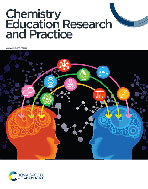Student perceptions of “critical thinking”: insights into clarifying an amorphous construct
Abstract
“Critical thinking” has been situated as an important skill or way of thinking in chemistry education. However, despite its perceived importance, there has not been an established consensus definition for chemistry and science education with many resources operating from working definitions. The many definitions obfuscate what “critical thinking” is and entails and thus makes it an amorphous construct within education. Previous work in chemistry education has explored how different groups define “critical thinking” and found that the groups had limited agreement. The work here seeks to expand the literature base on what we know about “critical thinking” by probing perceptions of the construct further. Using semi-structured interviews and constructivist grounded theory, I explored student perceptions of “critical thinking” in the context of organic chemistry courses. From the analysis, I generated four major themes. Students perceived that “critical thinking” (1) involved the application and use of knowledge, (2) was contrasted to passive approaches to learning, particularly rote memorization, (3) was learned from previous experiences prior to organic chemistry, and (4) was motivated by a variety of intrinsic and extrinsic forces. I assert that these overarching commonalities across student perceptions align with the previous literature and the scientific practices in three-dimensional learning, thus offering a potential way forward for clarifying the construct and being more explicit about what we want students to know and do.


 Please wait while we load your content...
Please wait while we load your content...
